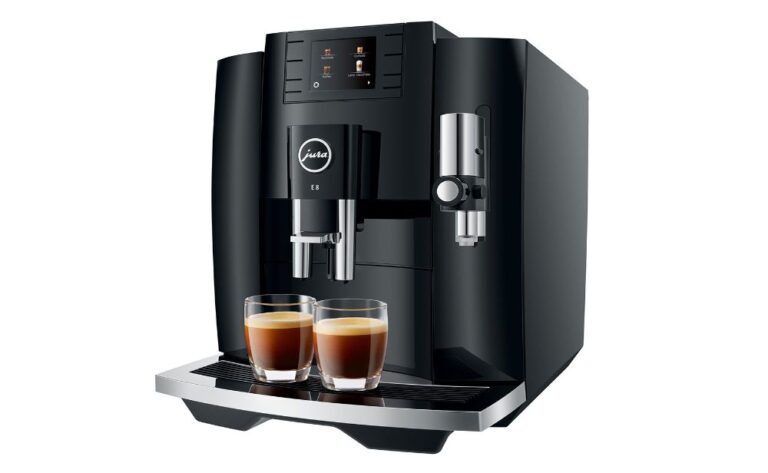
Are you interested in learning more about the distinctions between the La Marzocco GS3 and the Automatic?
We’ll make sure that all of your questions are answered. Both the manual and automatic versions of the La Marzocco GS3 will be discussed in this article.
You will learn the following things along the way:
• The similarities between the GS3 Manual and the GS3 Automatic in terms of their qualities
• What the most important aspects that differentiate them are.
• Specifics on the costs associated with purchasing these devices
• What criteria should you use to evaluate each option and decide which one is best for you?
Summary in a Nutshell
La Marzocco GS3 Manual
Those individuals who want to improve their trade and have complete command over each espresso will find that this model is ideal for them. If what you want to do is prepare artisan beverages that have the feel of being hand-crafted, then the mechanical paddles that come with this product are exactly what you need.
La Marzocco GS3 Volumetric (Automatic)
The brewing process can be made more efficient with the help of the GS3 Volumetric. Invest in this machine if you need something that is simple to master or if you want to guarantee that every drink is just as delicious as the one before it.
Similarities
Two separate boilers
Your espresso machine’s boiler is the component that serves as its nerve center. Because of this, the design of the boiler is essential to its day-to-day use.
To provide an example, a system with a single boiler requires only a single boiler in order to both froth milk and brew espresso. It is not possible to steam and brew at the same time due to the fact that there is only one boiler.
These La Marzocco machines use two boilers as opposed to just one in the traditional design. The water used for steaming is kept in one boiler, while the water used for brewing is kept in the other.
Because of the way that they are constructed, they are perfectly capable of brewing and steaming at the same time. Both the Manual and Automatic versions of the GS3 make the preparation of beverages significantly more expedient.
The Capacity of the Boiler
In addition to the number of boilers, it is also vital to consider how much volume each boiler can accommodate. This is due to the fact that a larger boiler would often produce more power.
Both of these devices have boilers that hold the same amount of liquid; the coffee machine’s boiler holds 1.5 liters, while the steam machine’s boiler holds 3.5 liters.
A capacity of this magnitude is rather large, and you will find that you are able to create drink after drink without needing to pause for breaks in between servings.
Steam Wands with a Cool Touch
In the vast majority of coffee businesses, experienced baristas have suffered at least one burn as a result of a steam wand that was too hot to handle.
Because of this, both the manual and automatic versions of the GS3 come equipped with insulated steam wands. No matter how long you have been using them, the steam wands will always feel cold to the touch.
One clear advantage of this is the enhanced safety of the working environment. During the course of the day, the espresso machine can be operated comfortably by either you or one of your employees.
But there is an additional benefit to cool touch steam wands, and that is the fact that they clean more quickly. Because milk does not burn onto the ends of the wands, you do not need to spend as much time scrubbing milk off of them. This is because milk does not burn onto the ends of the wands.
Dimensions
Before purchasing an espresso machine, it is always a good idea to make a mental note of its dimensions and write them down. Your investment will be a suitable one, and you’ll have space for your new acquisition if you follow these steps beforehand.
The dimensions of the GS3 Manual and GS3 Automatic are quite comparable to one another, just like many of their other attributes.
The Manual has a height of 17.50 inches, a width of 16 inches, and a depth of 21 inches. In comparison, the height of the Automatic is 15 inches, while its width is 16 inches and its depth is 21 inches.
They are both of a relatively small size, which means that if you have room in your house or business for one of them, you probably have room for the other.
a housing made of stainless steel
The manual and automatic variants of the GS3 both include a housing made of stainless steel, which serves two purposes:
To begin, it has a pleasing appearance. The machines have a clean appearance on the exteriors of the metal, which shines when placed on your counter tops.
Second, it extends the machine’s life and makes it more reliable. Because stainless steel serves to shield the moving parts included within each espresso machine, you may have confidence that your purchase will be an investment that lasts for a very long time.
At the conclusion of the day, you can be sure that you will be able to make espresso in a fashionable manner for a considerable amount of time.
Versatile Direct-Connect or Pour-Over Configurations
Even within the same homes and companies, the requirements that you have for your espresso machine may shift over time.
Both the GS3 Manual and the GS3 Automatic have the potential to develop in response to the shifting demands of your life. Use the machine in its pour-over configuration if you need to be able to carry it about easily. This is the most portable option.
Because it is a pour-over machine, you will have to add water to it manually whenever it becomes low on capacity.
Although this may be troublesome for those who need to produce a large quantity of espresso, it may be a great solution for enterprises that are constantly on the move, such as caterers. Additionally, it may function more effectively in households that do not have the plumbing necessary to install an espresso machine.
You can however convert either of these models to a direct-connect configuration in the event that you need to produce long lines of espresso orders. Both the Manual and the Automatic will automatically fill their tanks with water whenever they are used in direct-connect mode.
Because of their ability to switch between direct-connect and pour-over brewing methods, they are ideal for an even greater variety of settings and circumstances.
NSF Certification
Certifications from trustworthy bodies like the National Sanitation Foundation can guarantee the quality of your investment in an espresso machine.
Both the GS3 Manual and Automatic bear certifications from the NSF. Although you won’t absolutely need this accreditation to brew great espresso, the value of the piece of mind it provides is immeasurable and cannot be put a price on.
Both you and the health inspectors will be able to see from these certifications that your espresso machine has been given the go-ahead to operate after receiving the organization’s stamp of approval.
Differences
Paddle Options: Automatic or Manual
The most significant distinction between these GS3 models is seen in their fundamental operations.
Control of the brew cycle in the Manual is accomplished through the utilization of mechanical paddles. You can start and stop the brewing process by sliding the paddle in front of the group in either direction.
This requires a somewhat higher level of competence, as you need to be able to judge when it is the appropriate moment to cease the brewing process. If you don’t pay attention, you can wind up with espresso that has been extracted too much.
However, after you’ve mastered its operation, the Manual mode will provide you with the greatest level of control over every shot you take. This is better for baristas who are skilled because it gives them the opportunity to demonstrate their expertise and create customers’ drinks.
The Automatic, on the other hand, requires the usage of buttons to initiate and terminate the brewing process. In addition, because it is a volumetric machine, once you begin the brewing cycle, it will automatically stop itself based on the settings that have been pre-programmed into it.
As a direct consequence of this, the Automatic is more accommodating to novices. However, this does imply that you will have a little less control over the total amount of time that the brewing process takes.
La Marzocco GS3 Manual Periscope Manometer
The periscope manometer, which is only found on the Manual model, is the second key distinction between it and its Automatic counterpart.
You’ll discover a gauge directly above the group head that enables you to keep track of the brew pressure at all times. The pressure that is applied during the brewing process is quite important, as an espresso machine needs at least nine bars of pressure to function properly.
You will be able to tell when the machine is ready to brew by looking at this manometer. Additionally, you can use the manometer as a maintenance indicator by looking at it to assess whether or not your espresso machine is achieving the appropriate pressure on a regular basis. This may be done by looking at the manometer.
Which one do you think will benefit you more?
Because there are just a few key differences between the GS3 Manual and the GS3 Automatic, the decision you make will need to center only on those distinctions and how they relate to your specific situation.
Consider, for instance, the level of expertise that either you or your workers possess. If you anticipate having to educate new employees on a regular basis, you should look for an espresso machine that is straightforward to operate, like as the GS3 Automatic.
If you want an espresso machine that produces the same quality shot every time, the Gaggia GS3 Automatic is going to be your best option. Because the duration of the extraction is not dependent on the barista, the quality of your flavors will remain consistent throughout the process.
But if you want more freedom and control, or if you want to be able to modify drinks in an easier manner, you will find that the GS3 Manual meets all of your needs. It is also an excellent option for skilled baristas who wish to demonstrate their mastery of their craft.
The gist of it is as follows:
If you anticipate that many of your workers may lack prior experience, or if you want to ensure that the quality of the espresso produced is consistent at all times, the GS3 Automatic is the best option.
If you want more control over the process of producing drinks or you want to develop your barista abilities, the GS3 Manual is the right choice for you.
You will need to check the availability of either of these La Marzocco machines through other online merchants because we do not carry any of them in our store. On the other hand, we will provide some excellent options that are comparable to them below. You might also be interested in taking a look at the selection of La Marzocco machines that we have available as further potential alternatives.
If you’re looking for an alternative to the GS3 Automatic, we suggest going with the La Spaziale S1 Vivaldi II. You will be able to make shots that are consistent because to its powerful dual boiler design and its volumetric dosing system, which is simple to operate.
Consider the Rocket Appartamento if the GS3 Manual more closely matches your preferences. In addition to that, it boasts a gorgeous housing made of stainless steel and a semiautomatic design that is more adaptable and offers you complete control over the length of the brewing cycle.





